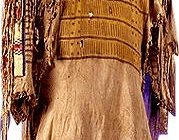Trapper hats are used for wintery and cold weather. Peruvian Trapper hats, also known as ‘chullo’ (this will be used interchangeably) are unique and have gained mass popularity. Read our guide for more facts & information…
Peruvian Trapper hats are popular all around the world. In the rural Andes of Bolivia and Peru it is common to see men and women, especially children, wearing traditional chullos. It is suitable for the cold, highland climate of Andean Peru. These hats aren’t just something of recent. The native people of the Andes have worn it for hundreds of years, before the arrival of Columbus.
The popularity of chullos has spread outside of Peru, and it is worn especially by participants of winter sports. Hand knitted chullos from Peru are sold by street vendors in the U.S., Canada and Europe. It has become a popular fashion item. It’s also a common homemade hat, because it’s relatively simple to knit.
Typical Peruvian Trapper Hats
Chullos come in different colours and designs. Most Peruvian Trapper hats, especially the handmade ones, are relatively thinner and lighter than factory made ones with fur. The absence of fur gives it its light weight. Even without the fur it can still facilitate warmth.
A typical chullo has an adjustable rope hanging from the earflaps. This is used to tighten the hat firmly around the head. It is a useful feature for participants in outdoor sports like skiing and snowboarding where breeze could make performance a little difficult.
Variations
There are many types of chullos, as artisans have their own preference and style. Some chullos have a relatively small crown that resembles a tuque. Many other chullos have long crowns. The crown may stay firmly, vertical on the head (like the crown of a top hat), or designed to extend out diagonally. It also depends on how one wears it.
Chullos may have traditional Peruvian designs and patterns. Chullos commonly have llama and wave pattern near the edge. Traditional Peruvian Trapper hats are usually bright and multi-coloured. This blends in with the colours of the traditional clothes (ponchos, monteras, etc.) of people living in the rural Andes of Peru. Solid coloured Peruvian trapper hats are also popular throughout the world, suitable for many occasions.
Earflaps are a beneficial feature in cold and windy conditions. A chullo’s earflap might be large, while others are small and provide less coverage. With a firm crown and tiny ear-flaps, it could resemble a cap. Some of these smaller, non-traditional chullos are suitable for sporting activities and warmer conditions. This style is usually mass-produced rather than handknitted with yarn. A typical chullo earflap is smaller than those of fur trapper hats.
Many trapper hats from Peru are made from wool, mainly alpaca fiber. This is because alpaca is widely reared in Peru. Other common materials are sheep, vicuna and llama wool. However, mass-produced trapper hats may have deluxe textiles, or it could be made from synthetic fabric.
To reinforce its protection against cold weather some chullos are lined with fleece. Another advantage of the fleece lining is to keep strands of fabric from falling out.
Many innovative artisans add other styles to their trapper hats. A Peruvian trapper hat may contain a little pom on top of the crown. Some may have a mohawk. Mass-produced chullos may have shock absorbant material. This is great for outdoor sports and activities.
Some Peruvian hats are crafted to resemble Santa hats. The hat is given an extended tail at the crown, and a pom-pom that hangs from it.





